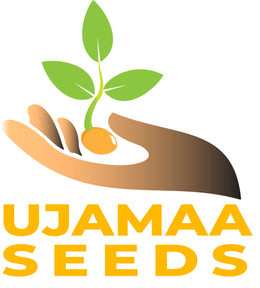Ceiba (Kapok Tree)
Ceiba pentandra
Seeds per pack ~ 10
Germination: 98% Packed for 2025
Description from our collaborators at Experimental Farm Network:
"Pronounced 'SAY-buh', and also called kapok, Java cotton, Java kapok, silk-cotton, or samauma, the legendary ceiba is tropical tree that's also one of the largest members of the mallow-family (which includes much smaller plants like hibiscus, cotton, and okra). It grows very tall, and sometimes the lower portions of the tree can grow as large as a house. Native to Central America and northern South America, it has become widespread through the tropics — often spread by people, but also, it's believed, by floating across the ocean in its buoyant pods. This is an important plant to dozens of cultures, as the many names listed below demonstrate. Ceiba has myriad uses including food (edible seed oil and floral nectar), medicine (diuretic, aphrodisiac, for headaches, and type II diabetes), lumber (light construction, paper pulp, plywood, rafts & canoes), art (such as the carved wooden masks of the Bobo and Mossi people of Burkina Faso), fiber, life vests, etc.
The soft filament-like fibers in the seed pods are the primary product of this tree. These fibers are light, resilient, water resistant, very buoyant, but unfortunately also quite flammable. It was formerly used by the ton in the manufacture of early life jackets and other flotation devices until it was replaced with synthetic materials. It isn't readily spun into yarn, like cotton fibers, so it is used mainly as a raw material much like down for applications like filling pillows, mattresses, upholstery, insulation, and even stuffed teddy bears. According to Wikipedia, native peoples along the Amazon River "harvest the fiber to wrap around their blowgun darts. The fibers create a seal that allows the pressure to force the dart through the tube."
Ceiba trees are so useful and so magnificent — with their broad canopies, beautiful flowers, and enormous trunks dotted with large conical spikes — that many peoples around the world have come to regard them as sacred (as in Maya mythology), and often these beliefs come to surround individual trees. One such is "the Castle of the Devil" in Trinidad, which is said to contain a trapped demon named Bazil. In Jamaican lore, Spanish colonizers are said to have forced enslaved people to bury treasure under a tree before killing them, trapping their spirits inside the tree to guard to buried treasure. And as a much less somber example, a 400-year-old tree on the Puerto Rican island of Vieques (see main photo here) has become a symbol of strength and resilience in the face of slavery, domination, imperialism, and oppression. According to a Vieques community leader named Ardelle Ferrer Negretti, a co-founder of La Ceiba Community Project, the indigenous Taino of Puerto Rico considered the ceiba tree to be the daughter of YaYa, the all-powerful goddess. Our seed was imported from Honduras by the good folks at Sheffield's Seed Company in Locke, NY."
GUIDELINES - FALL SOWING TREE SEEDS-PDF FOR PRINTING
KEEP SEEDS REFRIGERATED FOR LONG TERM STORAGE PRIOR TO SCARIFICATION TREATMENT BELOW.
|
GROWING INFORMATION |
|
|
Scarification |
Soak in water, let stand in water for 48 hours |
|
Stratification |
None required |
|
Germination |
Sow seed 1/2” deep, tamp the soil, keep moist but not wet |
|
Other |
They germinate best at around 25 degrees C (77F). Keep the soil constantly moist. |




